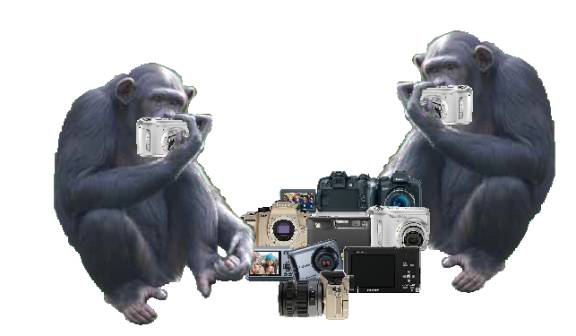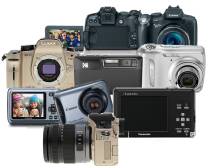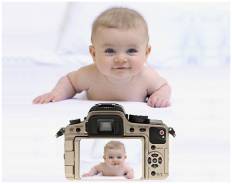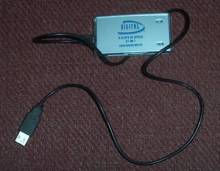DECIDING ON A

DIGITAL CAMERA
But with the convenience comes technology, and with technology comes confusion. Digital cameras come in all different prices and for many different values. And they are big investments. You don’t want to buy an expensive camera and pay for features that you will never use, neither do you want to buy a digital camera and discover later that it’s not enough for your needs. So let’s spend a little time and save a lot of money by studying the product so that you can invest wisely. But before we go any
HOW DO THEY WORK?

 | ||||||
convenience for quality isn’t really so devastating in most normal applications since you have to really look hard to see the difference in quality between conventional and digital pictures

 | ||||||
further, let me give you this advice. Whatever camera you buy, make sure that your first camera will be enough for all the needs that you anticipate needing in the future so that you will never need to buy a second camera in the future. It will save money later on.
If you magnify a digital photograph you will see something different from a conventional picture: thousands and thousands of tiny, different colored square dots.These are made by “PIXELS.” Think of each pixel as a tiny separate little camera located on the camera sensor. Each pixel filters the light that strikes it into the three primary colors (red, blue, and green), measures the intensity of each color, and amplifies and sends this information electronically through a processor called an “ANALOG-TO-DIGITAL CONVERTER” (ADC) into the memory. When recalled, the average value of each color recorded by each pixel is reproduced in one single square dot of one color, and the picture produced is a composite of all these dots.
Unless you look closely you probably won’t notice the difference between a conventional photograph and the composite of pixels in a digital photograph. But there is a difference. One feature of digital photography is that the pictures can be resized, edited, and altered in different ways. When you resize a picture, especially if you are enlarging it, the composite of small pixel dots becomes more apparent. The more pixels your camera can produce, the better your quality of picture, and when you resize a picture, the more quality it will retain. In short, more pixels mean more quality and also more cost.
QUALITY BALANCE
o 1216 x 912, or about 1.1 mega pixel (MP) is considered a low resolution which is almost never found now except in old, second hand cameras.
1216 x 912, or about 1.1 mega pixel (MP) is considered a low resolution which is almost never found now except in old, second hand cameras.
o 1600 x 1200, or about 1.9 MP is considered to be medium resolution. A 4 x 5 picture from this camera would be very similar to the quality of a conventional camera.
1600 x 1200, or about 1.9 MP is considered to be medium resolution. A 4 x 5 picture from this camera would be very similar to the quality of a conventional camera.
o 2240 x 1680, or about 3.7 MP is now the standard and produces good quality pictures of up to 16 x 20 inches.
2240 x 1680, or about 3.7 MP is now the standard and produces good quality pictures of up to 16 x 20 inches.
o 4064 x 2704, or about 11 MP, produces a very high scale quality digital quality picture.
4064 x 2704, or about 11 MP, produces a very high scale quality digital quality picture.
For a poster-sized picture you will probably need at least 5 MP. There are cameras available of 16 or 20 MP, but these are mainly for professional photography.
LIGHT EXPOSURE CONTROL
The light exposure of a digital camera is controlled by the size of the aperture and by the shutter speed. It is common for the aperture size to be automatic on digital cameras, but a camera that allows for manual adjustment of the aperture allows much more versatility and control over the final image. Unlike conventional cameras, the shutter speed of a digital camera can be adjusted to control the amount of time that the light is allowed to enter. The best cameras allow you to adjust both shutter speed and aperture size to allow for more advanced operations like capturing fast moving objects and blurring a background.
CAMERA LENSES


LOW RESOLUTION
HIGH RESOLUTION
The lenses in a digital camera are very similar to those on a conventional camera. In some cases the lenses on digital and conventional cameras are even interchangeable. Disposable film cameras have fixed-focus lenses, which cannot be adjusted. Their use is very limited, but that’s fine for a camera that you’re just going to throw away after a few shots. But a 35mm camera that you intend to keep for a while will have a moveable lens that you use to focus and magnify distant objects or very close objects.
But unlike conventional photography, digital cameras have two ways to change the magnification of an image. One method called “digital zoom” to focus the image on a smaller area of the sensor. This is an inferior method because fewer pixels of the sensor are activated, which means that the quality will be that of an inferior camera, although the image will appear larger. The same affect could be obtained using a computer by cropping the desired part of a picture and enlarging it.
By far the best way to change the magnification of a digital camera is to change the focal length, just as with a conventional camera. This is called OPTICAL ZOOM. Increasing the distance between the lens and the sensor makes an object appear closer and larger without sacrificing any quality in the final results. Both digital and conventional cameras that use replaceable lenses are extremely versatile, especially for professional use. The wide lens option magnifies extremely close objects, and the telephoto option magnifies objects far in the distance. Some cameras are focused manually and others have an automatic focus option.
IMAGE MEMORY STORAGE
. Image storage takes a lot of space. Most digital cameras will have an internal memory that can only hold a few pictures. So cameras also need an external memory, which may be a floppy disk, a hard disk, a memory stick, a writeable CD or DVD or a memory card. All of these are reusable. The type of memory storage is an important consideration when selecting a camera. Since you will probably view your pictures with a computer, make sure that your camera uses an external memory that your computer will accept. If you prefer, Digital Concepts sells a very inexpensive and useful card reader and writer device, which accepts several different sizes of memory cards to transfer into almost any computer.
Image storage takes a lot of space. Most digital cameras will have an internal memory that can only hold a few pictures. So cameras also need an external memory, which may be a floppy disk, a hard disk, a memory stick, a writeable CD or DVD or a memory card. All of these are reusable. The type of memory storage is an important consideration when selecting a camera. Since you will probably view your pictures with a computer, make sure that your camera uses an external memory that your computer will accept. If you prefer, Digital Concepts sells a very inexpensive and useful card reader and writer device, which accepts several different sizes of memory cards to transfer into almost any computer.
In order to make room for more pictures on a memory, whether internal or) external, a digital camera will normally have a format for compressing the pictures. One feature that makes compression possible is called repetition which looks for seeks patterns that are repeated several times in an image and records them in the memory only once. This method can reconstruct the image exactly as it was without any loss of digital information. This feature, however, can only compress files up to 50%, and often much less.
The other feature of compression is called irrelevancy, sometimes called lossy compression. Every photograph records information that the human eye is not capable of detecting. Irrelevancy eliminates this unnecessary information which cannot be seen anyway. Normally this does not cause any visible change in the reconstructed image, but if too much of this feature is used it can reduce the quality of the final picture.

 | ||||||
IMAGE PREVIEW
A digital camera will commonly have a LCD screen on the back which shows a live image of the subject exactly as it is perceived by the sensor which will take the picture, and some have even limited motion picture capability that moves as you aim your camera.
A digital single-lens reflex camera (DSLR) uses a viewfinder, as does the conventional film camera, but with a big difference. The DSLR uses a mirror in front of the sensor to reflect the image into a prism and through the viewfinder so that the eye sees through the camera lens exactly what the sensor will see when the picture is taken. Hence, the viewfinder is not offset, as in other cameras, and allows more accurate preview framing, especially for very close pictures. When the button is pushed to take the picture the mirror in front of the sensor swings up and out of the way just before the shutter is opened over the sensor for the exposure. All this happens automatically, but for a brief moment there is a blackout in the viewfinder till the mirror swings back down into its position. Some professional machines are designed so that the viewfinder blackout will last only a tenth of a second or less for rapid picture taking. The DSLR is a very sophisticated, professional quality camera, which also carries a selection of interchangeable lenses and has a function that allows a depth of field preview.